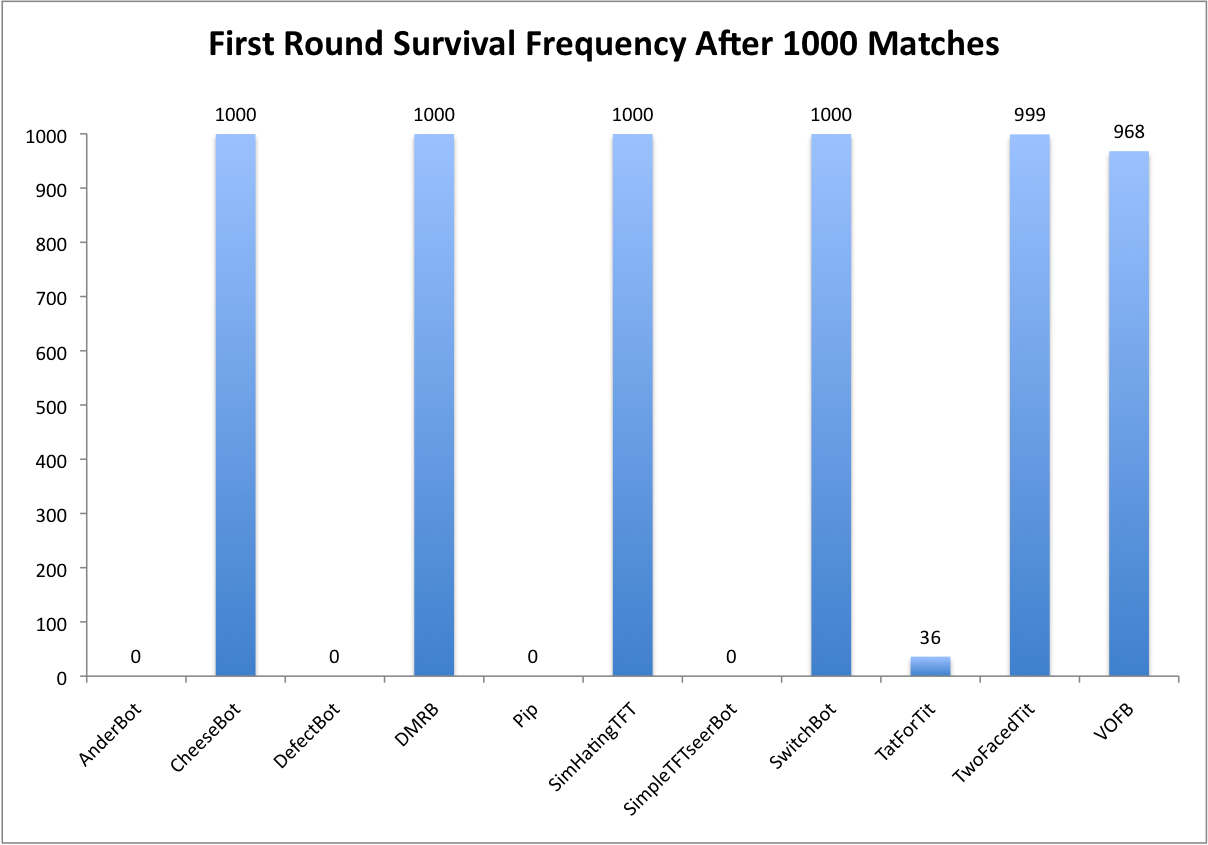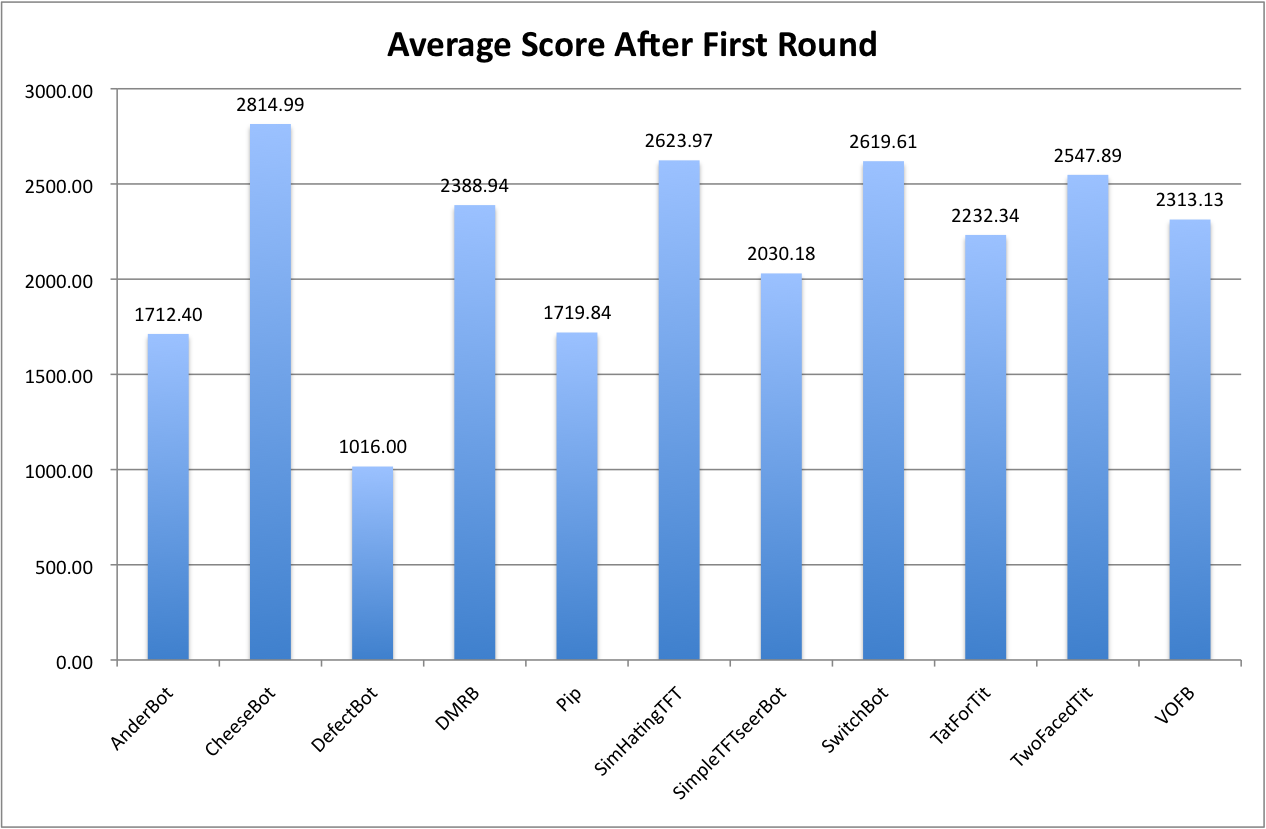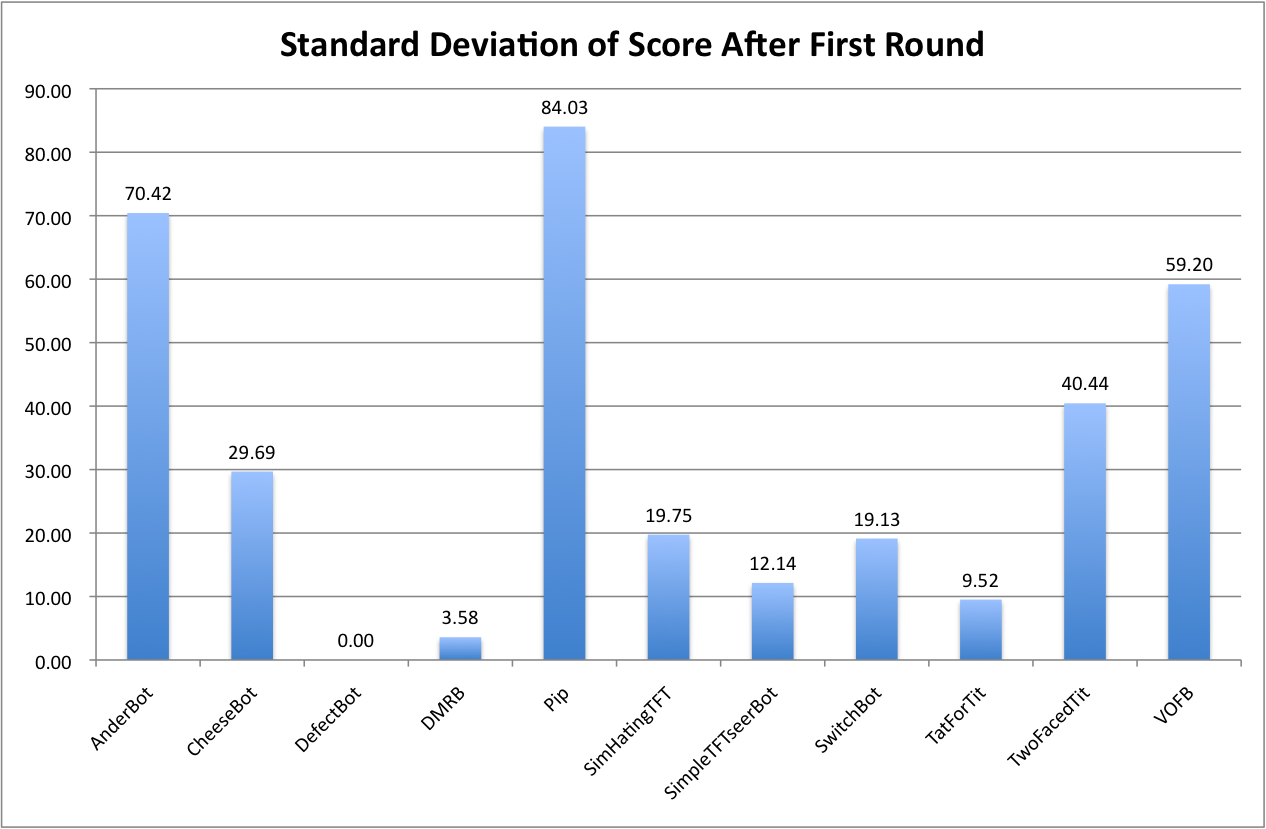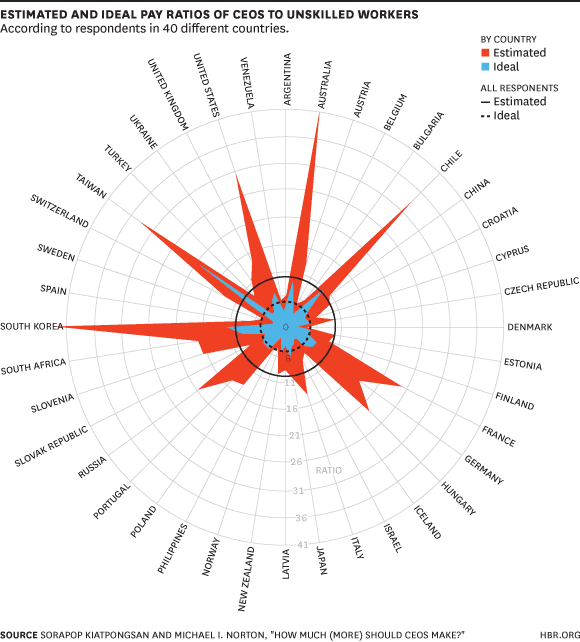Shared posts
Autism, Aikido, and Systems-Oriented Cognition
App Of The Day
Claire Cain Miller has details:
Enter a San Francisco start-up called Shyp, which [expanded] to New York [yesterday]. For a small fee, it fetches, boxes and mails parcels for you. The other week, I had a get-well package to mail to my cousin. I opened the app, snapped a photo of the items I wanted to send and entered her address. Fifteen minutes later, someone was at my door — and that was it. No boxes, no tape, no weighing, no buying stamps, no standing in line. …
Technology has conditioned us to expect ease, efficiency and speed in almost everything we do. Once it came from sewing machines and dishwashers, later from Google and Kayak, and most recently from start-ups that provide on-demand services like Uber for cars, Instacart for groceries and Munchery for dinner. The post office, with its slow-moving lines and cumbersome packing supplies, offers exactly the opposite.
Update from a reader:
It is amazing to me that people know so little about Post Office services. You can pick up a box (or boxes); keep them at home; put the stuff you are sending in said box; go to USPS.com and click on “ship a package”. Fill out the info; print the label; pay the cost with a credit card or Paypal and either drop in a Post Office or give it to your carrier. You never have to leave home and the cost is the Post Office cost not an inflated app cost. I send all my packages this way. Maybe they should call it a “Post Office app” so people will use it!
Most People With Addiction Simply Grow Out of It: Why Is This Widely Denied? - Substance.com
The Personhood Dodge
Crooked Timber seems to be suffering from a deficit of posts. I blame excess of virtue on my part. I was going to post about that Kevin Williamson piece that has set everyone off. I noticed it before it was a thing! And now it’s gone viral. And he’s followed up with a Twitter thing about hanging women who get abortions. Lovely.
Here’s the thing. 1) He’s trolling. 2) On or about Monday afternoon I realized this specific style of trolling bothers me a bit less than it did a couple years back.
Possible explanations:
1) I’ve grown old and cold and my youthful idealism for truth and justice has dried up.
2) I don’t wear my old “I refute Jonah Goldberg posts that haven’t even been written yet” t-shirt much anymore – because, seriously. Life’s too short to be always trying to live on the bleeding edge of NR nonsense. “Tastes are composed of a thousand distastes” (Paul Valery) and all that. Still.
3) I just don’t see this sort of rhetorical performance being a culture war winner for conservatives any time soon. If Williamson is just going to prove Dunham’s point, give or take – well, why the hell not? If he thinks the solution to the problem of getting down with his bad self is ‘keep digging!’, who am I to say no?
But life is always better with greater intellectual clarity, if it can be achieved, so let me conclude this post by explaining something about Williamson’s Tweets, which are baffling, and have actually been Boing Boing’ed.
What, you may ask, is ‘the personhood dodge’? That is, why does Williamson think that his views are strictly scientific (not religious) and that the only way to be pro-choice is by indulging in some sort of mystic mumbo-jumbo?
The answer is provided here.
There are many religious people in the pro-life camp, but it is not a religious question. It is a question about the legal status of an entity that is under any biological interpretation a 1) distinct, 2) living, 3) human 4) organism at the early stages of development. Consider those four characteristics in order: There is no scientific dispute about whether an embryo is genetically distinct from the body in which it resides, about whether the tissue in question is living or not living, about whether the tissue in question is human or non-human, or whether it is an organism as opposed to a part of another organism, like an appendix or a fingernail.The pro-abortion response to this reality is to retreat into mysticism, in this case the mysterious condition of “personhood.” The irony of this is that the self-professedly secularist pro-abortion movement places itself in roughly the same position as that of the medieval Christians who argued about such metaphysical questions as “ensoulment.” If we use the biological standard, the embryo is exactly what pro-lifers say it is: a distinct human organism at the early stages of development. If we instead decide to pursue the mystical standard of “personhood,” we may as well be debating about angels dancing on the head of a pin.
This is at least the sort of argument that is interesting to discuss (probably not with Williamson, who is obviously way too busy not caring about Lena Dunham having sex. But maybe he can take a break from all that.) The argument stands in a long line of similar arguments that try to finesse the is/ought distinction, by finding some scientific is to substitute for some-or-other puzzling ought. It’s a classic positivist gambit to say that anything that isn’t strictly scientific is therefore mystical (even though it’s actually kind of implausible that this opposition is exhaustive.)
It’s easy to see that Williamson’s argument generates odd implications. Thus, it can only be swallowed simultaneously with some extreme moral revisionism of ordinary attitudes and notions.
Suppose we encounter a race of non-human aliens that are, like us, sentient. They feel pain and pleasure. They have beliefs and desires, they laugh and cry and fall in love. They make life plans. Can we torture and kill them with impunity? After all, they lack human DNA? Obviously no one is going to say it’s just obvious that we can.
Suppose that for some strange reason a women is pregnant with a genetic clone of herself, so that the thing growing inside her is not genetically distinct from her, as an organism? Does it seem more ok to abort a clone, merely because it lacks a unique DNA signature? I think not. For that matter, would it be ok to murder an adult human clone – or one of two genetically identical twins, so long as you spared the other?
Suppose you want to defend the permissibility of factory farming against Peter Singer-style arguments? Would you simply repeat, over and over, that these animals have been tested and found to contain no human DNA?
Last but perhaps not least: human knowledge about basic truths of genetics is fairly recent. But human ethics is ancient. It is full of strictures against murdering, robbing, unfair treatment. It stipulates duties of care, on and on. If all this is really about genetic facts (not persons) then it seems to follow that all of human ethics is one giant Gettier problem. Quite literally, no human knew a thing about right and wrong before we basically knew how DNA works. Would it make sense to say that humans have moral knowledge of right and wrong, but that no humans did before 1953? Also, real knowledge about genetics is even today a fairly scarce commodity. (I confess to large gaps in my own knowledge.) Would it make sense to say that most of us take it on scientific faith that murder is wrong? That is, we usually have to trust the CSI boys and girls not just about the forensic details of a given murder scene, but about the victim being a genuinely qualified genetic candidate for the moral status of being murdered?
The basic formula for all such silly counter-examples is simple: it is a contingent fact that all known and accredited subjects entitled to the highest level of moral care do have unique human DNA signatures (with the exception of twins). So imagine a world in which that contingency doesn’t hold. What will our moral judgments track, in that world? Not the DNA signature (or lack thereof). That is, the reason we extend moral respect to some things, not others, is not that we value DNA. Rather, we judge some things, not others, to be persons.
If it turns out that personhood is a scientifically disreputable category, what follows is that the content of human morality is scientifically disreputable, for better or worse. If it turns out that our sense of personhood is vague, or conflicted in some cases, yet our moral sense demands an answer, then certain sorts of cases are just never going to be morally comfortable. We will have doubts and a nagging sense that there is something arbitrary, or absurd, about our ethical outlook. We will feel we’ve gone wrong somewhere. The pieces don’t fit.
But probably that isn’t such a surprising result. You can say that this is a proof that all humans are mystics. They go around all day believing in stuff that has no scientific basis, that doesn’t even really make sense, if you really push it. But, since we associate the term ‘mysticism’ with more specific forms of belief and behavior, perhaps this is not the best way to talk about it.
So Williamson is basically committing an old-style is/ought scientistic conflation, or positivistic fallacy, like I said. But maybe there’s a more general term for this fallacy? It goes like this. You notice that some subject, X, is a mess. But there is some subject, Y, in the vicinity, that can be handled neatly. You infer that X must be Y. Because what are the odds that the universe isn’t neat and tidy? Maybe this is just Occam’s Broom?
[UPDATE: thinking about it a bit more, after reading a comment by Brad DeLong, who takes Williamson to be reducing personhood to DNA, I think actually he is reducing moral truth to biological truth, while simultaneously being an eliminativist about personhood. It’s wrong to murder. That’s biology. But there’s no such thing as a person. That’s also biology. Curious combination.]
2014 iterated prisoner's dilemma tournament results
Followup to: Announcing the 2014 program equilibrium iterated PD tournament
In August, I announced an iterated prisoner's dilemma tournament in which bots can simulate each other before making a move. Eleven bots were submitted to the tournament. Today, I am pleased to announce the final standings and release the source code and full results.
All of the source code submitted by the competitors and the full results for each match are available here. See here for the full set of rules and tournament code.
Before we get to the final results, here's a quick rundown of the bots that competed:
AnderBot
AnderBot follows a simple tit-for-tat-like algorithm that eschews simulation:
- On the first turn, Cooperate.
- For the next 10 turns, play tit-for-tat.
- For the rest of the game, Defect with 10% probability or Defect if the opposing bot has defected more times than AnderBot.
CheeseBot
CheeseBot tries several simulation-based strategies, and uses the first one that applies to the current situation.
- If the opponent defected on the previous round, Defect.
- If the opponent does not defect against defectBot, Defect.
- If defecting on this round would lead to CheeseBot being punished for it in future rounds, Cooperate. CheeseBot checks this by simulating future rounds with a simulated history in which it defects on the current round.
- If the opponent is a mirror-like bot, Cooperate. To test whether a bot is mirror-like, CheeseBot simulates the opponent and checks if it defects against DefectBot and cooperates with a bot that plays tit-for-tat but defects against CooperateBot and DefectBot.
- If it is the last round, Cooperate.
- Defect.
DefectBot
Defect!
This bot was submitted publicly by James Miller.
DMRB
DavidMonRoBot (DMRB) takes a more cautious approach to simulating: It spends a few hundred milliseconds simulating its opponent to figure out what the rest of the round will look like given a Cooperate or Defect on the current round, and then picks the outcome that leads to the highest total number of points for DMRB.
This allows DMRB to gauge whether its opponent is "dumb," i.e. does not punish defectors. If the opponent is dumb, DMRB reasons that the best move is to defect; otherwise, if DMRB thinks that its opponent will punish defection, it simply plays tit-for-tat. DMRB spends only a small amount of time simulating so that other simulation-based bots will be less likely to have their simulations time out while simulating DMRB.
Pip
This one is a behemoth. At almost 500 very dense lines of Haskell (including comments containing quotes from "The Quantum Thief"), Pip uses a complex series of simulations to classify the opponent into a large set of defined behaviors, such as "CooperateOnLastInTheFaceOfCooperation", "Uncompromising" and "Extortionist." Then, it builds out a decision tree and selects the outcome that leads to the highest score at the end of the match. If I'm being vague here, it's because the inner workings of Pip are still mostly a mystery to me.
SimHatingTitForTat
SimHatingTitForTat, as the name implies, plays tit-for-tat and attempts to punish bots that use simulation to exploit it, namely by defecting against bots that deviated from tit-for-tat on any previous round. Its strategy is as follows:
- On the first round, Cooperate.
- On every subsequent round, if the opponent played tit-for-tat on all previous rounds, play tit-for-tat. Otherwise, Defect.
SimpleTFTseerBot
SimpleTFTseer uses a modified version of tit-for-tat that ruthlessly punishes defectors and uses one simulation per round to look at what its opponent will do on the last round.
- If either player defected in a previous round, Defect.
- If it is the last round, Cooperate.
- Otherwise, simulate my opponent playing against me on the last round of this match, assuming that we both Cooperate from the current round until the second-to-last round, and do whatever my opponent does in that scenario. If the simulation does not terminate, Defect.
SwitchBot
SwitchBot also uses a modified tit-for-tat algorithm:
- On the first turn, Cooperate.
- On the second turn, if my opponent Defected on the previous turn, simulate my opponent playing against mirrorBot, and do whatever my opponent would do in that scenario.
- Otherwise, play tit-for-tat.
TatForTit
TatForTit follows a complex simulation-based strategy:
- On the first round, do whatever the opponent would do against TatForTit on the second round, assuming both bots cooperated on the first round.
- On the second round, if my opponent defected on the previous round, Defect. Otherwise, do whatever my opponent would do against me, assuming they cooperated on the first round.
- On all subsequent turns, if my previous move was not the same as my opponents move two turns ago, Defect. Otherwise, do whatever my opponent would do against me one turn in the future, assuming TatForTit repeats its previous move on the next turn and the opposing bot cooperated on the next turn.
TwoFacedTit
TwoFacedTit simulates its opponent playing against mirrorBot; if it takes more than 10 milliseconds to respond, TwoFacedTit plays Cooperate. Otherwise, TwoFacedTit plays tit-for-tat and then Defects on the last round.
VOFB
Like SimpleTFTseerBot, VeryOpportunisticFarseerBot (VOFB) uses a very aggressive defection-punishment strategy: If either player defected in a previous round, Defect. Otherwise, VOFB simulates the next round to determine what the opponent will do given a Cooperate or Defect on the current round. If the opponent does not punish defection or the simulation does not terminate, VOFB Defects. On the final round, VOFB uses additional simulations to detect whether its opponent defects against backstabbers, and if not, plays Defect.
Tournament results
After 1000 round-robin elimination matches, the final standings are:
1st place (tied): CheeseBot and DavidMonRoBot
3rd place: VeryOpportunisticFarseerBot
4th place: TatForTit
The win frequencies for each bot:

If it were a sporting event, this tournament would not be particularly exciting to watch, as most games were nearly identical from start to finish. The graph below shows each bot's frequency of surviving the first round-robin round:

In other words, the same half of the field consistently swept the first round; AnderBot, DefectBot, Pip, and SimpleTFTseer never survived to see a second round. In general, this is because high-scoring bots almost always cooperated with each other (with the occasional backstab at the end of the round), and defected against AnderBot, DefectBot, Pop, and SimpleTFTseerBot, as these bots either did not consistently retaliate when defected against or pre-emptively defected, triggering a chain of mutual defections. Interestingly, the bots that continued on to the next round did not do so by a large margin:

However, the variance in these scores was very low, primarily due to the repeated matchups of mostly-deterministic strategies consistently resulting in the same outcomes.

In addition, all of the matches progressed in one of the following 5 ways (hat tip lackofcheese):
- ALL->[Cheese,DMRB,SimHatingTFT,Switch,TwoFacedTit,VOFB]->[Cheese,DMRB,VOFB] (963 matches)
- (Only CheeseBot, DMRB, and VOFB made it into the final round; all three cooperated with each other for the entire round, resulting in a three-way tie)
- ALL->[Cheese,DMRB,SimHatingTFT,Switch,TatForTit,TwoFacedTit]->[Cheese,DMRB,TatForTit]->[DMRB,TatForTit]->[TatForTit] (32 matches)
- (Only TatForTit and DMRB made it into the final round; both bots cooperated until the second-to-last turns of each matchup, where TatForTit played Defect while the DMRB played Cooperate, resulting in a TatForTit victory)
- ALL->[Cheese,DMRB,SimHatingTFT,Switch,TatForTit,TwoFacedTit,VOFB]->[Cheese,DMRB,SimHatingTFT,TwoFacedTit]->[Cheese,DMRB] (3 matches)
- (Only CheeseBot and DMRB made it into the final round; both bots cooperated with each other for the entire round, resulting in a two-way tie)
- ALL->[Cheese,DMRB,SimHatingTFT,Switch,TatForTit,VOFB]->[Cheese,DMRB,SimHatingTFT]->[Cheese,DMRB] (1 match)
- (Only CheeseBot and DMRB made it into the final round; both bots cooperated with each other for the entire round, resulting in a two-way tie)
- ALL->[Cheese,DMRB,SimHatingTFT,Switch,TwoFacedTit,VOFB]->[Cheese,DMRB,SimHatingTFT]->[Cheese,DMRB] (1 match)
- (Only CheeseBot and DMRB made it into the final round; both bots cooperated with each other for the entire round, resulting in a two-way tie)
This suggests that this game does have some kind of equilibrium, because these top three bots use very similar strategies: Simulate my opponent and figure out if defections will be punished; if so, Cooperate, and otherwise, defect. This allows bots following this strategy to always cooperate with each other, consistently providing them with a large number of points in every round, ensuring that they outcompete backstabbing or other aggressive strategies. In this tournament, this allowed the top three bots to add a guaranteed 600 points per round, more than enough to consistently keep them from being eliminated.
The tournament was slightly more interesting (and far more varied) on a matchup-by-matchup basis. Last-round and second-to-last round defections after mutual cooperation were common. TatForTit frequently used this technique against VOFB, CheeseBot, DMRB, and vice versa; this tactic allowed it to steal 32 wins in the final round. Other bots, particularly AnderBot and Pip, behaved very differently between matches. Pip, in particular, sometimes cooperated and sometimes defected for long stretches, and AnderBot's randomness also led to erratic behavior. Ultimately, though, this did not net these bots a large number of points, as their opponents generally defected as soon as they stopped cooperating.
For those interested in the gritty details, I've formatted the output of each match to be human-readable, so you can easily read through the play-by-play of each match (and hopefully get some enjoyment out of it, as well). See the github repo for the full logs.
Postscript
In the course of running the tournament, I received a number of suggestions and idea for how things could be improved; some of these ideas include:
- Random-length matches instead of fixed-length matches.
- Straight elimination rather than round-robin elimination.
- More "cannon-fodder" bots included in the tournament by default, such as copies of cooperateBot, defectBot, and tit-for-tat.
- A QuickCheck-based test suite that allows bot writers to more easily test properties of their bot while developing, such as "cooperates with cooperateBot" or "cooperates if no one has defected so far."
If anyone would like me to run this tournament again at some unspecified time in the future, with or without modifications, feel free to let me know in the comments. If you would like to fork the project and run it on your own, you are more than welcome to do so.
Many thanks to everyone who participated!
A Sunny Energy Future
Zephyr Dearthat doomsday scenario sounds, um, perfect?
Rebecca Leber spotlights two reports suggesting that “the world could be largely powered by the sun, instead of coal, within decades”:
The reports come from the International Energy Agency (IEA). It focuses on two kinds of solar—the kind that’s commonly seen installed on homes and businesses in the U.S. (solar photovoltaic) and the kind that generates heat to power (solar thermal). Within 35 years, according to the reports, they could account (respectively) for 16 and 11 percent of the world’s electricity generation.
It wouldn’t be easy to get to this level. Today, solar accounts for less than 1 percent of global energy consumption and 0.2 percent in the United States. To hit the levels IEA projects, there would have to be substantial investment upfront. But advances in technology, in addition to taxpayer subsidies, have helped solar panel costs come down some 80 percent in the last five years. If the IEA is right, costs may shrink another 65 percent by 2050.
Dave Roberts highlights the fact “that solar costs are plunging so fast that even the stodgy IEA is scrambling to keep up”:
At virtually every point in time over the last several decades, IEA has been behind the curve, underestimating the growth of renewables. Raise your hand if you think this is the last time it will reassess and upgrade solar’s potential contribution.
Relatedly, Brad Plumer analyzes the fight between solar and electric utilities. The core issue:
Rooftop solar generation has roughly tripled since 2010. By some estimates, a new solar system is installed every four minutes in the United States.
To electric utilities, this poses a dilemma. As rooftop solar becomes more popular, people will buy less and less electricity from their local power company. But utilities still have plenty of fixed costs for things like maintaining the grid. So, in response, those utilities will eventually have to raise rates on everyone else. Trouble is, those higher electricity rates could spur even more people to install their own solar rooftop panels to save money. Cue the death spiral.
Sound far-fetched? This was the doomsday scenario laid out by the Edison Electric Institute, an industry trade group, back in January 2013. Even a relatively modest increase in rooftop solar power could cause havoc. David Crane, CEO of NRG Energy, has called these trends “a mortal threat to the existing utility system.”
How Do You Enforce An Abortion Ban?
That has always been the question hovering around abortion politics – and the pro-life forces have often danced around it. My general sense is that doctors would be penalized in some way, while adoption policies would be greatly expanded – because many pro-lifers are against the best defense against abortion there is, contraception. But executing the mother? At first I thought this was a joke of some sort – or had some context I was missing:
@Green_Footballs Yes, I believe that the law should treat abortion like any other homicide.
— Kevin D. Williamson (@KevinNR) September 28, 2014
And for some reason, this is the treatment Williamson has in mind:
I have hanging more in mind. @LeveyIsLaw @charlescwcooke
— Kevin D. Williamson (@KevinNR) September 28, 2014
I have always found Williamson – even when I’ve disagreed with him – a stimulating writer. And maybe this sentiment is simply a function of Twitter wars getting out of hand. But it seems to me, as a leading writer for National Review, he needs to articulate how his favored abortion scheme would work with the hanging of sinful women. How would they be found guilty of using Plan B, for example? What kind of police state would be required? And as for hanging, why not stoning? Williamson is, indeed, as he puts it, old-fashioned.
*strangled noises* Nimona's last page is tomorrow, how shall I continue?!?!
- write fanfiction
- draw fanart
(Hashtag self serving webcomic artist)
(But I bet it would help)
Poor Choices
Linda Tirado, author of Hand To Mouth, explains why the poor often make terrible decisions:
I smoke. It’s expensive. It’s also the best option. You see, I am always, always exhausted. It’s a stimulant. When I am too tired to walk one more step, I can smoke and go for another hour. When I am enraged and beaten down and incapable of accomplishing one more thing, I can smoke and I feel a little better, just for a minute. It is the only relaxation I am allowed. It is not a good decision, but it is the only one that I have access to. It is the only thing I have found that keeps me from collapsing or exploding.
I make a lot of poor financial decisions. None of them matter, in the long term. I will never not be poor, so what does it matter if I don’t pay a thing and a half this week instead of just one thing?
Dreher, who was initially sympathetic to Tirado, had second thoughts after a reader dug up a 2013 hit piece on her. In an interview with Danielle Kurtzleben, Tirado defends herself against such attacks:
DK: You were accused of being a hoax after that “Poverty Thoughts” essay came out. Is that flaring up again now, with your book coming out? What’s your response to all that?
LT: I’m a published author at this point, and The Nation did a very, very good job of reporting on that. But most of the criticism I’ve seen centers around my decision-making processes. What I see a lot of is people talking about like things I have to explain — like why did you do this or why did you do that? A lot of people are confused about how I couldn’t, for instance, feed myself when I could pay my electric bill.
The Guardian also caught up with Tirado:
[Q.] Were you expecting what happened after your essay was published?
[A.] Oh, God, no! I was just on a message board. I was just talking to my friends the same way I’d done for many years. Then I went to bed, and then I went to work. It took me about two weeks to realise I was awake because I was pretty sure I was having a really fucked-up dream. There is no processing what happens when the internet looks at you and says: it’s your turn. It was insane: people were outside my house, they were calling my elderly relatives, I got 20,000 emails in a week. I still have no idea why it was this piece at this moment; it’s nothing me and my friends haven’t been saying for years. I don’t understand why it was controversial. Period.
Meanwhile, Andrea Louise Campbell, author of Trapped In The Safety Net: One Family’s Struggle, shares another harrowing story of poverty:
In February 2012 my sister-in-law Marcella was in a car accident on her way to nursing school, where she was working towards a career which she hoped would catapult her and my brother Dave into middle-class security. Instead, the accident plunged them into the world of American poverty programs. Marcella is now a quadriplegic, paralyzed from the chest down. She needs round-the-clock personal care and assistance.
The only source – public or private – for a lifetime of such coverage is Medicaid. But because Medicaid is the government health insurance for the poor, she and my brother must be poor in order to qualify. (Medicare does not cover long-term supports and services, and private long-term care insurance is time-limited and useless to a 32-year-old who needs decades of care). Thus, Marcella and Dave embarked on a hellish journey to lower their income and shed their modest assets to meet the state limits for Medicaid coverage.
To meet the income requirement, my brother reduced his work hours to make just 133 percent of the poverty level (around $2,000 per month for their family). Anything he earns above that amount simply goes to Medicaid as their “share of cost” – a 100-percent tax.
Localizing an operating system for a language with no high-tech vocabulary
 When Senegalese Mozillan Ibrahima Sarr translated Firefox OS into Fulah, he had to coin an entire technological vocabulary, so "crash" became "hookii" (a cow falling over but not dying).
Read the rest
When Senegalese Mozillan Ibrahima Sarr translated Firefox OS into Fulah, he had to coin an entire technological vocabulary, so "crash" became "hookii" (a cow falling over but not dying).
Read the rest
The World Agrees On CEO Pay
A new study investigated “what size gaps people desire” when it comes to CEO and unskilled worker pay ratios:
It turns out that most people, regardless of nationality or set of beliefs, share similar sentiments about how much CEOs should be paid — and, for the most part, these estimates are markedly lower than the amounts company leaders actually earn. Using data from the International Social Survey Programme (ISSP) from December 2012, in which respondents were asked to both “estimate how much a chairman of a national company (CEO), a cabinet minister in a national government, and an unskilled factory worker actually earn” and how much each person should earn, the researchers calculated the median ratios for the full sample and for 40 countries separately.
For the countries combined, the ideal pay ratio for CEOs to unskilled workers was 4.6 to 1; the estimated ratio was about double, at 10 to 1. But there were some differences country to country. People in Denmark, for example, estimated the ratio to be 3.7 to 1, with an ideal ratio being 2 to 1. In South Korea, the estimated gap was much larger at 41.7 to 1. The ideal gap in Taiwan was particularly high, at 20 to 1.
A quick rundown of the actual numbers on executive pay in the US:
In the 1960s, the typical corporate chieftain in the U.S. earned 20 times as much as the average employee. Today, depending on whose estimate you choose, he makes anywhere from 272 to 354 times as much. According to the AFL-CIO, the average CEO takes home more than $12 million, while the average worker makes about $34,000.
Do We Have A “Work Fetish”?
Patrick Spaet argues that the Western obsession with work ethic strains credulity:
Our attitudes towards work are extremely schizophrenic: we secretly aspire to sloth, while we loudly praise work. There isn’t an election poster that doesn’t promise more jobs. The call for more work is similar to the Stockholm syndrome, in which the victims of hostage-taking eventually develop a positive relationship with their captors. We constantly hear the drivel of “growth,” “competition,” and “local prosperity,” to convince us that we have to “tighten our belts,” because only that way are “secure jobs” possible–while everything else presents “no alternative.” A wage increase isn’t in the cards, because otherwise the company will go broke. We can’t tax too much, because otherwise the job generators will go abroad. All of these things have become the consensus–even among the wage slaves themselves.
This situation is all the more schizophrenic in that we take every opportunity every day to escape toil and work: who voluntarily uses a washboard, if he has a washing machine? Who copies out a text by hand, if he can use a photocopier instead? And who mentally calculates the miserable columns of figures on his tax return, if he has a calculator? We are bone idle, and yet we glorify work. The Stockholm syndrome of work fetishism has befuddled our minds. It is the paradox of the present: the religion of work has attained the status of a state religion, at exactly the point in time when work is dying. The sale of labor power will be as promising in the 21st century as the sale of stagecoaches in the 20th century.
Spaet, who published a version of this piece in the German paper Die ZEIT over the summer, goes on to remark on the considerable debate it stirred:
Some commentators pointed out that a lot of work is unpaid as well as underappreciated, like housekeeping, care work, and parenting. Yes, it’s a shame that this work, which is mostly done by women, doesn’t get the credit it deserves. It’s a vicious result of the pervasive work fetish that holds that only paid work is valuable work.
Other commentators were quite hostile: “Nobody has a right to be lazy,” they argued. “Those who don’t work are doing harm to society. They are just social parasites.”
Well, this is a prime example of the work fetish. And commentators like this one overlook the fact that most existing jobs are bullshit jobs. As Henry David Thoreau put it: “Most men would feel insulted, if it were proposed to employ them in throwing stones over a wall, and then in throwing them back, merely that they might earn their wages. But many are no more worthily employed now.”
Quote For The Day
“I think one of the poignant things about human beings is that they’re so undefended, physically. And that there’s an absolute relationship between that defenselessness and everything that’s impressive about them. I think a lot of us would like to be turtles and porcupines, and I think that in a way one of the impulses of human beings is to defend themselves in a way that nature did not. But I think the other impulse is to just love the experience with nothing to protect oneself, and actually feeling in fact no barrier. People know about their mortality in a way that we can’t know that any animal knows. They know about Earth being a ball in space. Intelligence of the high human sort could be translated as defenselessness, because we can know many things that are very hard to bear,” – Marilynne Robinson, in an interview included in A Door Ajar: Contemporary Writers and Emily Dickinson.
Speed Chess is amazing and demented
Zephyr DearThat bit about eggs and bread is super interesting.
Good Times
Winning: "Devin James was hired to represent the city of Ferguson and help officials rebuild the city’s image, but he was fired after officials say they learned he was a convicted killer."
Hmm, yes, nothing suspicious about that asterisk after...

Hmm, yes, nothing suspicious about that asterisk after “own it” at all, Apple iTunes ad!! I can’t wait to own* this movie!! But first, let’s find out what that small text reads:



ummm… my best guess is “OXCA1 FOR THE TOTALLY UT TURNTABLAX”??
anyway, shut up and take my money*
Hunters and Their Kills: Destroying or Taming Nature?
Flashback Friday.

Flipping through Safari magazine, something that struck me as odd. Because the magazine is aimed, primarily, at selling hunting safaris, the vast majority of the pictures were people posing with their kills.
What I noticed was that, in nearly 100 percent of the pictures, the animals were posed so as to look alive: resting or sleeping. Most often, the animal was on its belly with its legs folded naturally beneath it and, even, its head held or propped up. The hunters posed behind the animal, often with a hand on it, as if they were simply petting the animal. Further, there was almost never any evidence of the wound: no holes, no blood (though sometimes the weapon is included in the picture). It is almost as if the people are at a petting zoo and the animal is blissfully enjoying the human attention.




Imagine for a minute how challenging this must be to pull off. If you shoot an animal, it likely falls into any number of positions, many of which make it look like it’s just been shot (legs akimbo, head at an awkward angle, etc). The hunter and his or her companions must have to wrangle this 500, 1,000, 1,500 pound dead weight into the position in which it appears in the images.
Why do they do it?
I don’t know. But maybe it has something to do with the relationship to nature that hunter culture endorses. Instead of a destructive, violent relationship to nature that would be represented by picturing animals in their death poses, these pictures suggest a custodial relationship in which humans take care of or chaperone a nature to which they feel tenderly.
That is, they don’t destroy nature with their guns, they tame it.

Originally posted in 2009.
Lisa Wade is a professor of sociology at Occidental College and the co-author of Gender: Ideas, Interactions, Institutions. You can follow her on Twitter and Facebook.(View original at http://thesocietypages.org/socimages)
No Excuse Not to Have Dash Cams
We should always be skeptical of seemingly easy technical solutions to problems that are deeply embedded in our society. But this videotape of a totally innocent, totally non-threatening black motorist shot multiple times by a (at best) jumpy and panicked state trooper tells us that dash-cams should become standard for law enforcement around the country.
Read More →Dark Age America: The Senility of the Elites
Is Obama Pulling A Bush?
Tomasky insists no:
The first and most important difference, plainly and simply: Obama didn’t lie us into this war. It’s worth emphasizing this point, I think, during this week when Obama is at the United Nations trying to redouble international support to fight ISIS, and as we think back on Colin Powell’s infamous February 2003 snow job to Security Council. Obama didn’t tell us any nightmarish fairy tales about weapons of mass destruction that had already been destroyed or never existed. He didn’t trot his loyalists out there to tell fantastical stories about smoking guns and mushroom clouds.
The evidence for the nature of the threat posed by the Islamic State is, in contrast, as non-fabricated as evidence can be and was handed right to us by ISIS itself: the beheading videos, and spokesmen’s own statements from recruitment videos about the group’s goal being the establishment of a reactionary fundamentalist state over Iraq, Syria, Jordan, and Lebanon. That’s all quite real.
The in-tray has been full of similar sentiments. My response is: sure, so far as it goes. But Tomasky’s argument doesn’t go very far. And the way in which Obama supporters have lamely acquiesced to this reckless war fomented by a dangerous executive power-grab is more than a little depressing. It strikes me as uncomfortably close to pure partisanship. I can’t imagine them downplaying the folly of this if a Republican president were in charge.
Sure, we are indeed not being grotesquely misled this time about non-existent WMDs. But we are going to war despite the fact that ISIS is no more a direct threat to the United States than Saddam was – arguably much less, in fact. We have no answer this time to the unanswered question last time: what if our intervention actually galvanizes Islamist extremism rather than calming it? And the Arab coalition that Tomasky cites as evidence that this war is a far less American-centric one than 2003 has some issues when you confront reality. Here’s the latest:
Jordan said that “a number of Royal Jordanian Air Force fighters destroyed” several targets but did not specify where; the Emirati Ministry of Foreign Affairs said that the air force “launched its first strikes against ISIL targets” on Monday evening, using another acronym for the Islamic State. American officials said that Saudi Arabia and Bahrain also took active part in the strikes, and that Qatar played a “supporting” role.
This may be important window-dressing, but window dressing it still is. It sure isn’t close to the coalition George H W Bush assembled in 1990 – and it’s much smaller than George W Bush’s coalition in 2003. More to the point, the key element of any successful strategy will be the position of the Sunni Arab tribes – and they are still sitting on the sidelines. Turkey is AWOL so far. And the fact that the Arab states do not want their contributions to be broadcast more widely reveals the depth of the problem. Obama has Americanized the problem. Once you do that, the regional actors get even more skittish, because the only common thing for so many of the populations represented by these autocrats is loathing of the United States. This is the Arab world. The US will never get anything but hatred and cynicism and contempt from it.
Then there’s the question of authorization.
George W Bush got a few Security Council resolutions (if not the final, vital one). Obama hasn’t even bothered – he’s bombing a sovereign nation without even feigning a request for formal authorization. GWB – against Cheney’s wishes – procured a clear declaration of war from the Congress. Obama seems to have decided that he is more in line with Cheney’s views of executive power than George W Bush’s – and has blown a hole so wide in any constitutional measures to restrain the war machine that he has now placed future presidential war-making far beyond any constraints. If that isn’t an outright abandonment of almost everything he has said he stands for, what would be?
Bush’s war had a vague and utopian goal: the establishment of a multi-sectarian democratic republic in Mesopotamia. He had close to no plans for the occupation; and no real understanding of how quixotic a project he was promoting. Obama’s goals are just as quixotic – “ultimately destroying” ISIS from the air alone – and he has no Plan B for failure. Bush tried to defeat a Sunni insurgency with a multi-sectarian government in Baghdad. It never happened – and we had to bribe the Anbar tribes instead, and, even then we needed 100,000 troops to keep the lid on the whole thing.
Obama says he is fighting a Sunni insurgency with a broadly based Baghdad government – but replacing Maliki has led to no such thing. There is still paralysis in Baghdad over the interior and defense ministries, no cross-sectarian national entity to take the fight to ISIS, and the real risk of a Shiite government actually reinforcing the Sunnis’ sense that the US and the Shiites are now intent on persecuting them even further. That makes the prospects for this attempt at pacification even worse than in 2006.
And look: I think Obama is sincere in doing what he can with the Baghdad mess; but we have to be crazy to buy this line of argument in counter-insurgency at this point in history. We are fighting a Sunni insurgency on behalf of a Shiite government and a near-independent Kurdistan, a fight which might well empower Iran and even Assad. This is about the worst formulation for this struggle as one could come up with. It does not bring Sunnis into the struggle; it may well keep them out.
Of course I wish I didn’t have to write this. And it is, of course, true that we are not torturing prisoners with the sadism and insanity of the Cheneyites. It is true we are not sending in 140,000 troops into another country. We are sending almost none – but to achieve the same result! To do the same thing we did last time and hope for a better outcome is the definition of insanity. But to do the same thing with even less of a chance to achieve it takes things to a new level of incoherence.
This is an illegal war, chosen by an unaccountable executive branch, based on pure panic about a non-existent threat to the United States, with no achievable end-point. Apart from all that, it’s so much better than Bush, isn’t it?
(Photo: Obama holds a bilateral meeting with Prime Minister of Iraq Haider al-Abadi during the 69th United Nations General Assembly in New York City on September 24, 2014. By Allan Tannenbaum-Pool/Getty Images.)
Seattle prosecutor drops all public marijuana tickets
 As reported here, almost all of them were issued by a single cop, who hates legal weed and subjected his victims to humiliating rituals like flipping a coin to see which ones would get the ticket and which would walk away free.
Read the rest
As reported here, almost all of them were issued by a single cop, who hates legal weed and subjected his victims to humiliating rituals like flipping a coin to see which ones would get the ticket and which would walk away free.
Read the rest
iamroboteye: Today is both Bisexuality Visibility Day and the Autumnal Equinox I’m not saying...
Today is both Bisexuality Visibility Day and the Autumnal Equinox
I’m not saying bisexuals are the faerie folk of autumn who dance with fauns around sacred fires on cool fall nights, buuuuut let’s look at the facts here
Patreon?
Zephyr Dearawww :c
Josh submitted:
Any plans for getting one started? I’m sure your fans would pledge some strong support were you to do so (to include myself).
Also, superb work on the two new pages. Voodooienne is certainly the most beautiful art I’ve seen from you so far, in my humble opinion. A damn shame that Lackadaisy isn’t your full-time pursuit (assuming, of course, you would want it to be).
You’re both a great artist and writer Ms. Butler, and your work has brought me much happiness. So you know.
Wishing you the best in all things,
Josh
—————————————————————
Thank you for the kind feedback!
I’ve got five or six inquiries about Patreon in my ask box, so I figure I’ll just go ahead and try to explain myself.
Patreon is pretty fantastic as far as providing online creators some extra liberty to do their thing, and I’m really very honored and grateful that there are some people out there who’ve expressed an interest in becoming patrons of my comic. While it might result in a nice little dash of supplemental income for me, however, it wouldn’t amount to a job-replacer. The job is an all or nothing situation. As such, Patreon wouldn’t actually buy me more time to work on the comic like it could if I was earning a living doing freelance gigs or something. I know you only receive funds when you deliver, but I’d feel pretty crappy if people were laying money down in hopes of more routine updates, exclusive pieces of art, sketchy tokens of appreciation and such, only to be disappointed that comics still only come along once in a blue moon. (And watching the number of patrons tick down slowly as months go by without a new comic would just feed the neurotic and unpleasant sense of failure I have about the whole thing).
I have so little of myself to give to the comic right now, it’s just not the right time for a Patreon. Thank you very much for your interest, though.
The Victimology Game – And The Empathy Of Atheists
Here’s a fact you kinda know already if you watch Fox News, but it’s good to see it quantified in a new Pew poll. 50 percent of white evangelicals believe they are subject to a lot of discrimination, while only 36 percent of them believe the same thing about African-Americans. So it’s not just Bill O’Reilly who’s whining. White evangelical Fox News viewers really do believe they are subject to more discrimination than blacks. But this is not entirely about evangelicals; the belief that your own group is especially persecuted is pretty damn endemic:
While 61 percent of Hispanics say “there is a lot of discrimination against” blacks, 71 percent say the same of themselves … And while Catholics are less apt to see discrimination against their own, fully 33 percent agree that they face “lots” of discrimination. No other group sees Catholics facing even close to that amount of discrimination.
The data has some other little nuggets. When you look at the aggregate views, the balance seems about right to me. The victim pecking order goes like this, from the most victimized to the least: gays; Muslims; blacks; Hispanics; Jews; evangelicals; atheists; Catholics. The most empathetic group? The religiously unaffiliated. They believe that gays, Muslims, blacks and Hispanics have a harder time than they do. How ironic that it’s the faithless who are the most able to appreciate the struggles of other minorities.
septembriseur: Wow, OK, I had kind of conceptualized that Joss Whedon post along the lines of “here...
Wow, OK, I had kind of conceptualized that Joss Whedon post along the lines of “here are some random thoughts that I’m gonna store behind a cut in case a few people are interested,” not expecting so many people to reblog it. But since there was so much interest, I ended up thinking about it more. And the direction my thinking took me in was this: what is it that women find attractive in male and female characters, and to what extent does this match up with what men assume that women find attractive in these characters?
LITERALLY THIS ENTIRE POST JESUS CHRIST
THIS
Syria Becomes the 7th Predominantly Muslim Country Bombed by 2009 Nobel Peace Laureate
The U.S. today began bombing targets inside Syria, in concert with its lovely and inspiring group of five allied regimes: Saudi Arabia, Bahrain, United Arab Emirates, Qatar, and Jordan.
That means that Syria becomes the 7th predominantly Muslim country bombed by 2009 Nobel Peace Laureate Barack Obama—after Afghanistan, Pakistan, Yemen, Somalia, Libya and Iraq.
The utter lack of interest in what possible legal authority Obama has to bomb Syria is telling indeed: Empires bomb who they want, when they want, for whatever reason (indeed, recall that Obama bombed Libya even after Congress explicitly voted against authorization to use force, and very few people seemed to mind that abject act of lawlessness; constitutional constraints are not for warriors and emperors).
It was just over a year ago that Obama officials were insisting that bombing and attacking Assad was a moral and strategic imperative. Instead, Obama is now bombing Assad’s enemies while politely informing his regime of its targets in advance. It seems irrelevant on whom the U.S. wages war; what matters it that it will be at war, always and forever.
Six weeks of bombing hasn’t budged ISIS in Iraq, but it has caused ISIS recruitment to soar. That’s all predictable: the U.S. has known for years that what fuels and strengthens anti-American sentiment (and thus anti-American extremism) is exactly what they keep doing: aggression in that region. If you know that, then they know that. At this point, it’s more rational to say they do all of this not despite triggering those outcomes, but because of it. Continuously creating and strengthening enemies is a feature, not a bug. It is what justifies the ongoing greasing of the profitable and power-vesting machine of Endless War.
If there is anyone who actually believes that the point of all of this is a moral crusade to vanquish the evil-doers of ISIS (as the U.S. fights alongside its close Saudi friends), please read Professor As’ad AbuKhalil’s explanation today of how Syria is a multi-tiered proxy war. As the disastrous Libya “intervention” should conclusively and permanently demonstrate, the U.S. does not bomb countries for humanitarian objectives. Humanitarianism is the pretense, not the purpose.
President Barack Obama makes a speech during the Nobel Peace Prize Concert at Oslo Spektrum on December 11, 2009 in Oslo, Norway
Photo: Sandy Young/Getty Images
The post Syria Becomes the 7th Predominantly Muslim Country Bombed by 2009 Nobel Peace Laureate appeared first on The Intercept.
Left Cold By Coffee?
A new study suggests heavy coffee-drinkers “find it more difficult to identify and describe their own emotions”:
“Alexithymia” – Greek for “no words for feelings” – is the psychological terminology for an inability to put ones emotions into words. [Researcher Michael] Lyvers et al did a survey study of 106 university students and found that alexithymia was correlated with the amount of caffeine consumed per day…. Lyvers et al say that
Alexithymics reported consuming nearly twice as much caffeine per day on average compared to non-alexithymic controls or those with borderline alexithymia.
As to why this is the case, the authors speculate that
Perhaps those with alexithymia consume caffeine more heavily than non-alexithymics in an attempt to optimize inherently low arousal levels.
Reviewing the results, Neuroskeptic stays true to his nom de plume:
My concern here is that because this is a self-report questionnaire, the [Toronto Alexithymia Scale] is measuring worries over alexithymia as opposed to alexithymia per se. Moreover, I notice that in Lyver’s dataset, the TAS was quite strongly correlated with self-reported anxiety, apathy, dis-inhibition and executive dysfunction. So I’d say that it’s plausible that all of these self-report scores are reflecting some basic ‘tendency to give negative answers on questionnaires’ which might reflect neuroticism, low self-esteem or (if you prefer) just realism.













